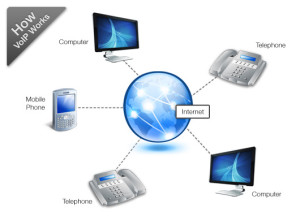Archive Post
Digital Signage is a Medium to improve Corporate Communications
You’ve spent all this money on a digital signage system, and put in many hours of work to craft attractive, succinct and informative messages. So how do you know that your efforts are working? If you haven’t been using digital signage for corporate communications, think about doing so – it saves time and money, and makes everything run smoother.
Avoid Confusion
Just ask around – if your employees seem to be unclear about your company’s mission, policies and procedures, then something isn’t right. Make sure you have messages on your displays that clarify and explain these things. If you already have some of these messages, maybe they need to be re-tooled to be clearer. Or maybe your messages are fantastic, but people just aren’t retaining the information. Think about finding memorable ways to present what you need them to know.
Humor is often a good way to get things lodged in people’s memories. Instead of simply saying what a policy is, show the pitfalls of not following it in a funny way. Storytelling also helps with retention – having a long-tail campaign involving a character who constantly gets into difficulties because he or she doesn’t follow the procedures (with some sort of tag line, like “Don’t be a Marvin – do X instead”) would certainly get people interested and help them remember what they’re supposed to do.
Cut Paper Waste
One of the reasons you bought a digital signage system was to save paper – not just the cost of the material and ink, but the time spent printing, distributing, and later removing and disposing of flyers and memos. Look at your paper and printing costs – if they haven’t gone down, then something needs to change. Think of how you can craft messages for your digital displays that convey the same information as your printed materials so you can replace them, not duplicate them. It can sometimes be a challenge to get older managers to think in terms of digital signage. Take these folks on a short tour, showing them the possibilities that digital signage offers. Let them talk to employees who enjoy this method of information dispersal. If they see that people like digital signage, and that it works, they will be more likely to adopt it.
Increase Participation
You promote the office holiday party or latest blood drive, but then almost no one shows up. That sort of defeats the purpose of team events. If you aren’t promoting events on your digital signs, start doing it. You will get far more message saturation with your displays than with emails (that are most likely either never read, or looked at once and then forgotten). And seriously think about your designs for these promotional messages. Make sure they stand out and are different from the purely informational messages. Choose brighter backgrounds, or different layouts from your usual corporate communications. This will draw people in, even if they have become used to simply “phasing out” the regular messages on display.
Recognize Employees
Do your employees feel appreciated? Survey them to find out. If not, their work quality will suffer, and employee turnover can become a real problem. Use your digital screens to let them know that their work is being noticed. Display leaderboards and shout outs for landing a big contract, or for going above and beyond the call of duty. Mark work anniversaries, and spotlight employees so everyone gets to know one another. When there’s a new hire, make them feel part of the team with welcome messages. Anything you can do to motivate and recognize your teams will result in higher morale and bottom-line results.
Relieve HR Teams
Check in with your Human Resources department – how are things going? Are they completely overwhelmed with issues and problems? If so, your digital signage can take some of the burden off of them. If there are many instances of the same issue – complaint, questions, accidents, etc. – post message on your displays addressing these concerns. Often an employee feels like they are the only ones with a problem – but when they see the solution on all the screens, they know that they aren’t, and that management is paying attention and taking steps to help.This is especially true in organizations that have multiple locations. And if your company has overseas facilities, you’ll probably have things come up that are unique to that facility. HR can post answers and advice specific to that location, culture and language on localized playlists, no matter where their department is located. Localizing your communications with different designs will again show that management is taking a keen interest.
There is almost no medium- or large-scale issue that cannot be efficiently addressed using digital signage. You can reach more people than with any other communication medium, and can respond to issues instantly. Increase employee satisfaction and motivation, get more people to come to your events, save money and waste, and make sure that everyone is playing from the same rulebook. That’s the power of good digital signage.
Source: http://www.digitalsignagetoday.com
Businesses should see network as a platform for innovation and growth
The whole point of a network is just to connect stuff, right? Connect people to people, people to machines, and machines to machines.After all, it’s a cost center not a growth engine. At least, that’s the way it’s treated by most businesses these days.Most, but not all.
In each industry there are a few companies that think differently about the network because they think differently about their business. For these companies, it is a growth engine and a platform for business innovation upon which they deliver amazing new services and create enormous new value.
How can a network fuel business innovation and growth? To understand how this dichotomy can be true, and understand how and why the network should be treated as a strategic asset and revenue growth center, we need to unpack two truths.
- First is the customer connection and co-creation are at the heart of modern business models.
- Rapid delivery of products and services is necessary to support business objectives in a modern business model.
The modern business model
Two things are probably happening in your industry. If not, they’ll happen soon.
- The things you make are getting smarter and are able to talk to you, or each other, or other things, or all of the above.
- What you build into your product is only part of its ultimate value. Your customers are helping to build its value, too. Maybe they’re rating your product for other customers. Maybe they’re giving your other customers advice on how to use or fix your product. Or maybe your customers areyour product (think Facebook, Twitter and Airbnb). The world is going digital. It’s pervasive in your personal life, and it’s coming to your company, too, ready or not. In the digital world, customers help create value. But here’s the conundrum: We live in a new world—where networks that enable co-creation and rapid product delivery are a must—but our networks are built for the old world—where we just build stuff and sell it to people. This new world needs a new network.
A new network?
Here’s where the second part comes into play. If you’re a digital business, you need to be able to change things fast. Amazon makes a change to its production environment every 11 seconds on average. How well do you think your network, or the average business network, would do in this type of dynamic environment?
Modern networks are built for continual micro-changes and have automated a high percentage of the “work” needed to produce the change. This means automating workflows and processes, from mundane network-level provisioning and configuration work to sophisticated interoperation with the storage layer, applications, security and even the user.
Imagine each and every process is the smallest possible version of itself. It stands alone and can be mixed and matched with other processes to create work streams. Imagine the same for each function in a network or the broader IT infrastructure. For example, routing isn’t a function, rather each and every step that a router does is a standalone function, like DNS look up, or route selection.
With this environment, a business can rapidly create new services, products and offerings. The underlying digital infrastructure can respond in real time using automated systems. This is what we mean by making the network into a platform for business innovation. People’s time and talent can be focused on creating value for customers, on creating platforms and environments in which customers can create value for themselves and each other, and where partners can do the same. The result is not simply that the network gets out of the way, but that it accelerates and enhances the ability of the business to innovate and drive new revenue.
How far out is this network utopia?
Getting started isn’t all that hard. As William Gibson once said, “The future is already here—it’s just not evenly distributed.” The technologies to do this exist today, and the move to more software-oriented systems will only accelerate the time to value. Google, Facebook, Amazon and other companies do all of this now, and they get huge competitive advantage in time and cost as a result. You can absolutely start down the same path today. Your most significant hurdles will be culture, skills and current processes, which have to be re-evaluated and re-aligned in concert with the goal of innovating at the speed of modern business.
It isn’t necessary to change everything all at once. Most companies begin by automating the physical infrastructure—moving from switches and routers to fabrics, automating network workflows, and implementing basic policy engines. Then they graduate to more advanced capabilities that add agility, such as software-based controllers and software-defined networks (SDN), replacing physical elements with software using virtual network functions (VNF). And eventually they add intelligence in the form of machine learning and advanced analytics.
As you do this, not only do you raise the strategic value of your infrastructure team, but you raise the business value of your infrastructure. It advances from being primarily about connectivity to being primarily about revenue and innovation. It becomes a growth engine for your business, and the network becomes a platform for innovation.
Source: networkworld.com
Video Conference is heading towards a Flexible Work Culture!
Collaboration technologies such as video conferencing are giving new dimensions to the business communication. Today, video conferencing has taken a central stage in the board room discussion and is helping enterprises to improve team collaboration and creating connections beyond the geographic boundaries.
A Research and Markets report forecasts that the global video conferencing market will touch $6.4 billion by 2020. According to the report, the video conferencing market in Asia Pacific is also expected to achieve significant growth by 2020, driven primarily by increasing demand from countries such as India and China. With organizations adopting flexible work culture, the video conferencing business is set to grow, giving huge prospects to telecommunication solutions vendors.
Changing face of Communication
Gone are the days, when the business communication was largely driven by emails and telecommunication. Today, video conferencing has become an important part of office meeting routines. Enterprises are deploying video conferencing solutions to enhance both internal and external communication in order to get instant feedback. Video conferencing enables businesses not only increase their productivity but enhance employee and customer relationships through face-to-face interactions using digital tools.
With network bandwidth increasingly dropping in price with improvements in technology, video solutions are also becoming smoother, smarter and more affordable, helping to boost widespread usage.
Business organizations are now looking at flexible solutions, and are shifting towards unified communications (UC) deployments. Peoples’ needs have evolved with time. They are now looking for collaboration tools to be added to applications which will make their communication and work much easier. With network bandwidth increasingly dropping in price with improvement in technology, video solutions are also becoming smoother, smarter and more affordable, helping to boost widespread usage.
Another important factor which is accelerating the growth of the video conferencing market is the growing use of video conferencing applications in industries like healthcare and education. Video conferencing services and cloud-based video conferencing solutions are enabling healthcare organizations to widen the reach of their services to remote areas. In the education sector, video conferencing is enabling educational institutes to offer tutorial and training services to students using video conferencing solutions.
Emergence of Video-as-a-Service (VaaS)
Video conferencing has long moved from equipment to software, web based solutions. While the room-based video conferencing model has a significant share in the market, the cloud based collaboration tools are also gaining traction in the industry. Enterprises are looking at cloud for a reliable, secure and features rich and affordable video-conferencing solutions. Video-as-a-Service (VaaS) has a lot of potential and it has increasingly becoming popular and is coming across as an extremely valuable service. The VaaS market is growing rapidly because of the transition from traditional web conferencing to advance cloud-based conferencing services. The market is expected to witness exponential growth in the next 5 years.
As businesses keep growing and continue to adopt advanced IT infrastructure, the conference rooms in the organizations will become more complicated with too many solutions and services. VaaS will help in clearing the clutter and will be a helpful solution to adopt. So, the future is clearly in cloud and services. However, the room-based video conferencing model will maintain its position in the market.
As businesses keep growing and continue to adopt advanced IT infrastructure, the conference rooms in the organizations will become more complicated with too many solutions and services. Industry experts say that the VaaS model will help in clearing the clutter in the business communication process.
Similarly, Video PaaS products are gaining traction in terms of application in the tele-health, media and entertainment, education, and banking and finance sectors. However, rising concerns regarding data security, increasing quality issues, and lack of a proper business case for real-time communications are the major hindrance in a large scale adoption of Video PaaS business models.
M&A and Expansion Plans
In the era of always connected workplaces, organizations are shifting toward conference meetings in order to enable faster decisions and reduce traveling hassles. Additionally, in order to extend their reach globally, organizations around the world are increasingly focused on investing in cost effective communication tools. This has created immense opportunities for the video conferencing players. Leading video conferencing solution vendors are very aggressive on their expansion plans.
Mergers and acquisitions (M&A) are one of the ways for vendors to penetrate into emerging markets. The latest report by Transparency Market Research says the majority of companies operating in the global video conferencing market are focused on expanding their footprint through M&A. Similarly, in order to gain traction across emerging markets, the established companies are collaborating with prominent regional players. Vendors such as Microsoft Corporation, Avaya, Polycom, Huawei Technologies, Vidyo, Cisco Systems, ZTE Corporation, and Lifesize, have been strengthening their position in the global video conferencing market through this strategy.
Growth prospects in India
With various digital projects such as Digital India and Smart City in place, India is the most desirable growth destination for all the major collaboration communication technology vendors. Video is an essential and strategic component of the ambitious smart city and safe city project. Hence, all the prominent vendors are betting big on such projects in the country. Cisco Systems is in talks with several state governments to provide video collaboration solutions in smart city projects. Similarly, Polycom sees a huge opportunity in the initiatives like Digital India, Make in India and plan to raise 100 smart cities. Avaya is also in the race of smart city project and is looking to invest in foray into the initiative with its new Fabric Network Connect technology.
As businesses are going digital, the modes of communications have also gone through significant changes. Today, businesses are open to invest in high quality video collaboration technologies in order to enhance their productivity. Hence, product innovation and go to market strategy will largely determine the success of vendors in this space.
Source: www.cxotoday.com
Video Conferencing promotes Networking in Virtual world!
The key to unlocking the true potential of video conferencing lies in recognising its limitations. A researcher from the University of Lincoln,UK, has found that while video conferencing has become an exceptional technology for creative companies, helping to overcome the barrier of physical distance and saving time and money, it’s important that technology-savvy entrepreneurs do not overlook the importance of traditional, face-to-face interactions. Building on previous research into video conferencing in small and medium-sized enterprises (SMEs), the study focused on the use of the technology for networking in support of open innovation – those activities where organisations seek out external knowledge and expertise to help drive business advancements.
The findings suggest that entrepreneurs should be aware of the impact video conferencing can have on their external collaborative relationships, recognising the benefits and limitations of different communication tools at different points in the networking process. Virtual interactions can be useful for technical discussions and moving ideas forward, but a trusting relationship and good understanding of the issue at hand must be established first. Similarly, richer forms of communication, such as face-to-face meetings, should be the preferred option when trying to convey particularly complex information or completing a business deal, the research indicated.
The study was carried out by Dr Jialin Hardwick, from the University’s Lincoln International Business School. Data was collected from 17 business leaders from 12 biotech firms in Scotland through a combination of participant observation and in-depth interviews. All participants had experience of working with customers to develop new products. Dr Hardwick observed that managing inter-organisational networking and attempting to maximise virtual interactions in open innovation can be challenging to entrepreneurs, especially those in high-tech SMEs, where many have a science background. Surprisingly Networking activities at conferences or trade events provide good opportunities to meet other professionals in the industry, helping to reduce the feeling of inter-personal distance brought up by the technology and enabling future virtual interactions.
Furthermore, investing in collaborative relationships by following up on virtual interactions with richer face-to-face meetings could be effective in developing and maintaining a valuable relationship from a long-term perspective, even though it may be costly at the time.
source:www.phys.org
Project SENDATE to make secure and efficient networks for the Internet of the future
 University of Würzburg’s Institute of Computer Science is working to make secure and efficient networks for the internet of the future. Two of its projects received nearly EUR 750,000 worth of funding. Large data centres are the major checkpoints of the Internet. They save, process and forward business data and private information. Today’s data centres have huge computing and storage capacities and are usually located in remote places far away from their customers. Already today, these data centres have a lot to cope with and the end is not in sight. They have to serve an increasing number of smart phones, tablet computers and other terminal devices causing the associated Internet traffic to grow continuously. New Internet apps in the environment of industrial and health systems for example contribute to this trend.
University of Würzburg’s Institute of Computer Science is working to make secure and efficient networks for the internet of the future. Two of its projects received nearly EUR 750,000 worth of funding. Large data centres are the major checkpoints of the Internet. They save, process and forward business data and private information. Today’s data centres have huge computing and storage capacities and are usually located in remote places far away from their customers. Already today, these data centres have a lot to cope with and the end is not in sight. They have to serve an increasing number of smart phones, tablet computers and other terminal devices causing the associated Internet traffic to grow continuously. New Internet apps in the environment of industrial and health systems for example contribute to this trend.
The project aims to bring data centres closer to users. For data centres to operate in a secure, flexible and reliable manner, Telecommunications and IT will have to be consolidated. It also focuses on decentralizing the computing and storage capacities. A new research consortium SENDATE (Secure Networking for a Data center cloud in Europe) is seeking to develop network architecture and technologies for secure and flexible distributed data centres. Innovative approaches such as Network Functions Virtualization (NFV) in combination with Software Defined Networking (SDN) are the basis for a secure, flexible, low latency, and locality-aware distributed data centre approach to support the upcoming application scenarios. The project is managed by Nokia Solutions and Networks GmbH & Co. KG. Set to run until February 2019, it is financed by various research sponsors within the scope of the Celtic-Plus IKT research cluster. The SENDATE-PLANETS subproject involves a JMU research team from the Department of Communication Networks which develops security mechanisms for NFV/SDN networks. The scientists also investigate the development, operation and optimization of virtual network functions and their positioning in distributed data centres.
Software Defined Networking (SDN) enables implementing flexible, virtualized and programmable networks in the Internet of the future. To study the possibilities and performance of network management using SDN, department also collaborates with InfoSim GmbH & Co. KG in the SDN-Perf project (Performance of SDN). The medium-sized company located in Würzburg has specialized in developing network management software.
Source : http://phys.org/
VOIP services can change your perception to do business
It might be all over the news these days but VoIP (Voice over Internet Protocol) has been around a little longer than most people think. However, it’s only in the last few years we have seen an explosion in VoIP use by the general population, thanks to steady technological improvement that has lowered the barriers to entry. Like other business IT tools that came before, VoIP has now transcended that initial stage, to now stand on the verge of changing how businesses – of all sizes – work and collaborate. In fact, business phone systems that integrate VOIP and standard calling have become economically viable for even small and medium-sized businesses, and we can expect this tech to spread faster than ever.
VoIP in India
Today, VoIP’s status as one of the rising stars in communications tech, fueled by a steady uptake in adoption by small and medium sized businesses, is borne out by market research. In 2013, the India VoIP Market Forecast & Opportunities report predicted a 27% annual rise over the following five years. According to the report, the credit for this mainly goes to better 3G / LTE and broadband coverage. Other factors to the growth of VoIP include government initiatives, higher purchasing power, and the growth in affordable 3G-enabled mobile devices.
According to a report by the Internet and Mobile Association of India (IAMAI) and IMRB International, mobile Internet usage has shot up from 238 million users in June 2015, to 206 million by the end of the year. As mobile Internet usage was expected to grow by over 55 percent (to touch 371 million by June 2016), we can expect greater use of VoIP systems, platforms and applications – on both the enterprise and consumer fronts.
What VOIP could bring to SMB and Enterprise businesses
As seen across the world, the prospect of taking calls anywhere, and anytime, without being restricted to a device or being hampered by the need for expensive infrastructure not only boosts productivity, but drives more businesses to consider VoIP as their primary communications tool. But so far, this flexibility has been missing in the Indian market as customers are restricted to using expensive on-premises setups – which keeps the advantages of VoIP also restricted to enterprise customers with deep pockets.
VoIP has already made great strides in India, but the progress hasn’t been as fast as one would have expected. Considering our huge smartphone user base and availability of bandwidth even in Tier II and III cities, we can easily visualise the potential for VOIP usage in India. In fact, VoIP is already used a lot, especially by the consumer market – Skype, Viber, Facetime, WhatsApp are all consumer VoIP applications.
VoIP can change how you do business
From improved collaboration between teams to more efficient customer support, VoIP works as a transparent medium where the message finally gets the importance it deserves – without getting caught up in issues relating to access and networks.
Imagine no-fuss, easy conference calls with your colleagues across the world, or connecting to popular VoIP services via your fixed line phone (or vice versa), or even the prospect of allowing your sales and support staff to be available for calls wherever they are – without needing specialised telecom infrastructure – and the future may well lead to one packed with rich interactions that will result in more efficient project management, faster closure of leads, quicker resolution of support issues, improved CSAT, and of course, happy employees who are not bound by office boundaries but are focused on solving problems from anywhere!
And these benefits won’t just be restricted to large enterprises. VoIP’s inherent nature enables even startups and SMBs to take advantage of VoIP’s true capabilities, allowing them to compete in their markets on a level playing field
– Connect from anywhere as location independence becomes a reality
– Connect from any device, whether mobile, web or conventional phones
– Far more affordable than fixed line operators
– Redundant networks improve reliability
– Geographical barriers vanish
VoIP is the future of telecommunications, whether we talk about the consumer market or the enterprise. In fact, if we are to judge it on the basis of how it enriches human-to-human bonds and how it enables better collaboration, it may very well bring about the biggest change in the Indian unified communication industry.
Source: www.cxotoday.com
Tarang Sanchar enters final lap and is due for official launch soon
Telecom Department’s portal Tarang Sanchar will be soon be active. It will give clarity to users at best. What exactly can users expect? It will let users check radiation compliance status of towers across the country and get a specific one tested by DoT on request and for a fee. It has entered the final phase and is due for official launch soon. The portal, which has been populated with data from 12.5 lakh base transceiver stations (BTS), will enable users to view tower-specific details such as the operator, the supporting technology (2G/3G/4G) and most importantly, if it meets electro-magnetic frequency (EMF) compliance norms.
The portal has been set up in close co-ordination with the industry. In case a subscriber wants to get a particular BTS tested by DoT to assess its EMF compliance level, the same can be done by putting in a specific request. There are two ways of testing. One is free testing and the other is a paid testing version. If the prescribed ceiling in a particular service area for testing of BTS has already been reached, the user can get the same tested by payment of a fee, most likely to be pegged at Rs 4,000. The fee is predicated on the fact that the testing process is elaborate, takes a few hours and involves technical capacity and manpower. The tower-specific data have been collated from all service providers and that the portal also represents a “green initiative” as the entire data will now flow from operators to the Telecom Department electronically. This may make things easier and compatible between service operators and Telecom Department.
Licensee is required to submit to the Term Cell an EMF self-certification for every BTS and the same is required even when there is any change with regard to any tower such as orientation or change in height etc. The portal will make the entire process online using digital signature and showcase Digital India and paperless activity. It promotes how India is taking steps toward a developed nation.
Source: Economictimes.Indiatimes.com
Chinese Long March 3B launches first mobile Telecom Satellite
China successfully launched the first satellite for mobile telecommunication named Tiantong-01 satellite. Launched at 00:22 am local time on 6th August at south-western China’s Xichang Satellite Launch Centre with the Long March-3B carrier rocket, it is surely going to bring a revolution in telecom industry.
Tiantong-01 was designed by China Academy of Space Technology and its ground service will be operated by China Telecom. The Long March-3B carrier rocket was produced by China Academy of Launch Vehicle Technology. It was the 232nd flight of the Long March series carrier rockets, and the 36th launch of the Long March-3B. The three-stage Long March 3B rocket is currently the most powerful Chinese booster in service. Tiantong-01 will establish a mobile network with ground facilities, providing services for China, the Middle East, Africa and other areas. It is the first satellite of China’s home-made satellite mobile telecom system, and a key part of the country’s space information infrastructure. More geostationary satellites will be sent into orbit for the system. Development of the project began following a devastating 8.0 magnitude earthquake in Wenchuan in 2008, as part of efforts to ensure communications networks remain operational when disaster strikes. The project is also aimed at providing services in hard to reach areas such as oil rigs, mountains and deep forests.
The country is also preparing for the next round of its manned space mission. They also plan to carry a second module for the space mission replacing Tiangong 1 and a staffed spacecraft called Shenzou-11. China sent its first astronaut into space in 2003, and since then has taken huge advancements. According to a report, more satellites will be added to the communications network in future as demand grows.
USSD message based mobile banking to be reviewed by TRAI as tariff seems unreasonable
The Telecom Regulatory Authority of India (Trai) has come out with a consultation paper to identify and address issues related to poor uptake of unstructured supplementary service data (USSD) based mobile banking services in the country. The Unstructured Supplementary Service Data or USSD messages are those messages which are widely used to inform pre-paid consumers about deduction of balance after each call or SMS they make or send. These messages cannot be stored in mobile phone. Using short codes on USSD platform like *121#, people are able to check their balance and subscribe to telecom services. In case of mobile banking such codes allow account holders to access different services like checking bank balance, fund transfer etc. At present, Trai’s rule cap USSD rate at Rs 1.5 per session. The regulator has received requests from various authorities involved in banking services to reduce the rate of USSD session.
The USSD-based mobile banking has not gained traction in the country. According to Trai, expansion of banking and reach of financial services were vital for the long-term sustainable development of any country. From the standpoint of equity, financial services need to be provided at an affordable cost to those who are currently excluded from the formal financial system.
Trai said mobile telephony could be the answer to the problems related to last-mile service delivery of financial services. With close to 225 million Jan Dhaan accounts, around one billion Aadhaar cards, and one billion mobile connections in the country (450 million in rural areas), it was expected the USSD-based mobile banking service would gain popularity among the unbanked and under-banked population. It further said that in May 2016, only 3.7 million mobile banking transaction attempts reached the National Payments Corporation of India platform.
Clearly, the present tariff per USSD session for mobile banking offered by telecom service providers is several times higher than the average tariff for a Minute of outgoing voice call, or an outgoing SMS, or an MB of data transfer. The telecom operators have opposed lowering of tariff. Trai, in the paper, has sought opinion on various issues including method for prescribing the tariff and whether the present pricing model for USSD-based mobile banking in which consumers pay for the use of USSD should continue.
source:www.business-standard.com,timesofindia.indiatimes.com
Why is there still a tele-density divide across India?
ASSOCHAM, or The Associated Chambers of Commerce and Industry of India, has released data from a study conducted on the tele-density distribution among the states of India. Tele-density refers to the number of individuals presently using a cellphone or a connected device, among every 100 individuals. An important study in light of the recent influx of affordable mobile devices and the advent of 4G network states that while states like New Delhi stands at a tele-density figure of 238, other states like Bihar, Assam, Madhya Pradesh, Uttar Pradesh and Odisha all have tele-density figures of below 70, hence stating that despite the recent telecom boom, India as a nation is far from being entirely well-connected.
In face of the states with prospering tele-density, Bihar has a tele-density figure of 54.25, Assam has 55.76, Madhya Pradesh has 62.33 and Uttar Pradesh has 62.74. Among other states that have tele-density below 70 is Odisha, too. However there is a visible Digital Divide between states with some of the eastern states not finding support from service providers. There could be many reasons like lack of infrastructure or difficult land mass or indifference in terms of business opportunities.
The recent times have seen a rise in the telecommunications sector. The Government of India has given a major push towards technologically advancing India, with movements like Make in India and Digital India drawing a number of big names to the country. One of the notable participants of the Digital India programme is Intel, who is providing groups of technology innovators a space to bring connectivity and technology to rural areas. Home-grown technology is also a major focus in recent times, with Make in India seeing Moto, Xiaomi and manufacturer Foxconn set up assemmbly units across India.
India is not well connected yet and a considerable digital divide is still hindering growth. 4G network spectrum is also taking flight, with Airtel’s 4G services already existent for over two years. Vodafone is rolling out its own service, and Relaince Jio has unveiled 4G for its employees already, at the end of 2015. Other network services to aid India’s connectivity scenario include Google’s Railware service to bring public WiFi hotspots to railway stations, BSNL’s plan to set up 40,000 public WiFi hotspots to connect remote areas, and technology companies like Lukup Technologies coming up with Lightup, a light-powered network transmitter and receiver that acts as a wireless network provider to areas where laying fiber lines is difficult, both logistically and economically. Google’s Project Loon is also scheduled to arrive in India, after having been given the green signal. ASSOCHAM’s study highlights a key point of concern for India, and highlights the need to further spread the network to deeper corners of the nation, which remain out of the connected environment to date. Technological awareness is also a key area, which can go hand-in-hand with better infrastructure.
Source: http://www.digit.in/











